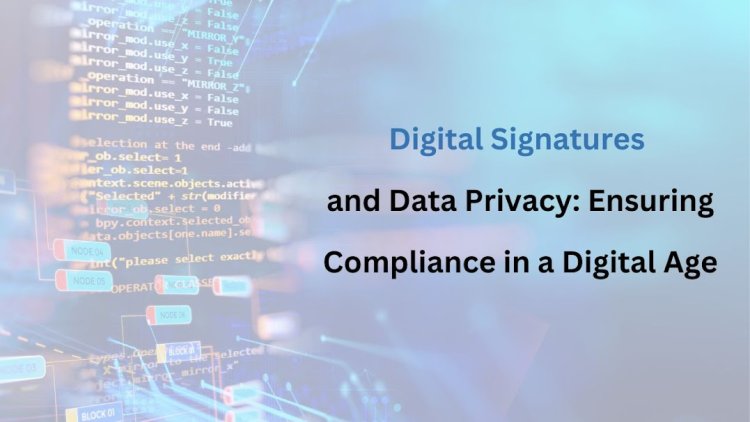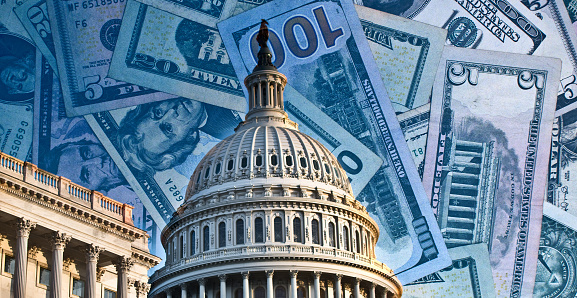Digital Signatures and Data Privacy: Ensuring Compliance in a Digital Age
A digital signature is a cryptographic technique used to verify the authenticity and integrity of digital documents or messages. Unlike traditional handwritten signatures

As businesses and individuals increasingly rely on digital tools for communication and transactions, the importance of secure and compliant systems for data exchange has grown exponentially. Digital signatures have become a cornerstone of this transformation, offering a secure, efficient, and legally recognized way to sign documents electronically. However, with the rapid adoption of digital signatures comes the critical responsibility of ensuring data privacy and regulatory compliance.
In this guide, we’ll explore the role of digital signature in protecting sensitive information, how they support data privacy, and the steps organizations can take to ensure compliance with evolving regulations.
What Are Digital Signatures?
A digital signature is a cryptographic technique used to verify the authenticity and integrity of digital documents or messages. Unlike traditional handwritten signatures, digital signatures provide enhanced security by using algorithms to encrypt and verify data. They are widely recognized as legally binding in many countries and are often used for contracts, agreements, and official communications.
Digital signatures rely on public key infrastructure (PKI), which uses a pair of cryptographic keys—public and private. The private key is used to create the signature, while the corresponding public key is used to verify it. This ensures that the signature is unique, tamper-proof, and tied to the signer’s identity.
The Intersection of Digital Signatures and Data Privacy
Digital signatures are not just about ensuring the authenticity of documents; they also play a significant role in protecting data privacy. Here’s how:
-
Encryption: Digital signatures use encryption to secure the content of the document. This ensures that the information cannot be accessed or altered by unauthorized parties.
-
Authentication: By verifying the signer’s identity, digital signatures reduce the risk of impersonation and unauthorized access to sensitive information.
-
Integrity: Any changes to a digitally signed document are detectable, ensuring that the original content remains intact and unaltered.
-
Audit Trails: Digital signature solutions often include detailed audit logs, providing a transparent record of who signed the document, when, and where. This level of accountability is essential for maintaining data privacy.
Why Compliance Matters
In today’s regulatory landscape, organizations are required to comply with stringent data protection laws and standards. Non-compliance can result in significant legal, financial, and reputational consequences. Digital signatures must be implemented in a way that aligns with these regulations, including:
-
General Data Protection Regulation (GDPR):
GDPR mandates that organizations handling the personal data of EU citizens must ensure its protection and integrity. Digital signatures must comply with GDPR requirements for secure data processing and storage. -
Electronic Identification, Authentication, and Trust Services (eIDAS):
eIDAS is an EU regulation that establishes standards for electronic signatures, seals, and certificates. It categorizes digital signatures into three levels—Simple, Advanced, and Qualified—each with specific compliance requirements. -
Health Insurance Portability and Accountability Act (HIPAA):
In the healthcare sector, digital signatures must comply with HIPAA regulations to protect sensitive patient information and ensure secure electronic health record management. -
Federal ESIGN Act and UETA:
In the United States, the ESIGN Act and Uniform Electronic Transactions Act (UETA) provide a legal framework for electronic signatures, ensuring their enforceability and compliance. -
Other Regional Laws:
Countries around the world have implemented their own data privacy and electronic signature laws, such as the Personal Data Protection Act (PDPA) in Singapore, and the Indian IT Act.
Ensuring Compliance with Digital Signatures
To ensure compliance while using digital signatures, organizations must take the following steps:
-
Choose a Compliant Solution:
Select a digital signature solution that meets the regulatory requirements of your industry and region. Look for certifications such as eIDAS compliance, ISO 27001, or SOC 2 Type II. -
Implement Strong Authentication:
Use multi-factor authentication (MFA) to verify the identity of signers and prevent unauthorized access. -
Protect Signed Documents:
Ensure that digitally signed documents are encrypted and stored securely. Implement access controls to restrict unauthorized access. -
Maintain Audit Trails:
Use digital signature solutions that provide detailed audit logs to demonstrate compliance during audits or legal disputes. -
Educate Employees:
Train employees on the importance of data privacy, the proper use of digital signatures, and compliance with relevant regulations. -
Monitor and Update Policies:
Regularly review and update your digital signature policies to align with evolving laws and industry standards.
The Benefits of Ensuring Compliance
-
Legal Validity: Compliant digital signatures are legally recognized in most jurisdictions, ensuring that your signed documents hold up in court.
-
Enhanced Security: By adhering to regulations, you reduce the risk of data breaches and unauthorized access, protecting sensitive information.
-
Increased Customer Trust: Demonstrating a commitment to data privacy and security builds trust with customers and stakeholders.
-
Reduced Risk of Penalties: Compliance minimizes the risk of fines and penalties associated with non-compliance.
-
Operational Efficiency: Digital signatures streamline workflows, reduce paperwork, and enable secure remote transactions, all while ensuring compliance.
Future Trends in Digital Signatures and Data Privacy
As technology evolves, digital signatures and data privacy will continue to play a central role in business operations. Key trends to watch include:
-
Blockchain Integration: Blockchain technology is being integrated with digital signatures to enhance security, transparency, and immutability.
-
Artificial Intelligence (AI): AI-powered tools are improving the accuracy and efficiency of identity verification for digital signatures.
-
Global Standardization: Efforts are underway to create global standards for digital signatures, making cross-border transactions more seamless and compliant.
-
Biometric Authentication: The use of biometrics, such as fingerprints or facial recognition, is becoming more prevalent in digital signature solutions to enhance security.
The Process of Digital Signature
-
Visit Website: Open our website to begin.
-
Fill Details: Select user type (individual/organization), certificate type (signing or both), and validity, and enter your name, phone, email, and address. Agree to terms and submit.
-
Choose Token: Select "Yes" if you need a USB token or "No" if you already have one.
-
Make Payment: Pay via net banking, credit/debit card, or UPI.
-
Review and Submit: Check your details, then submit.
-
Receive Digital Signature: Your digital signature will be sent on a USB token after processing.
Suggested Read – Class 3 Digital Signature Certificate For eTender
Conclusion
Digital signatures are revolutionizing the way businesses handle documents and transactions, offering unparalleled security, efficiency, and legal recognition. However, their effectiveness hinges on ensuring compliance with data privacy laws and standards. By implementing secure and compliant digital signature solutions, organizations can protect sensitive information, build trust, and stay ahead in an increasingly digital world.
Whether you’re a small business or a multinational corporation, investing in compliant digital signature technology is a critical step toward safeguarding your data and maintaining regulatory compliance. Choose a solution that prioritizes security, supports your industry needs, and helps you navigate the complexities of data privacy with confidence.
What's Your Reaction?























